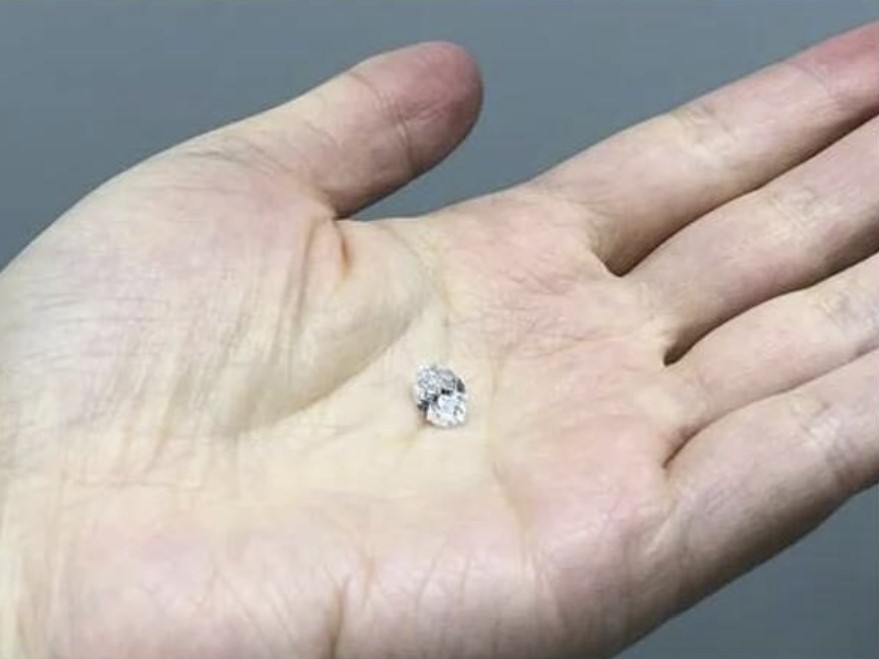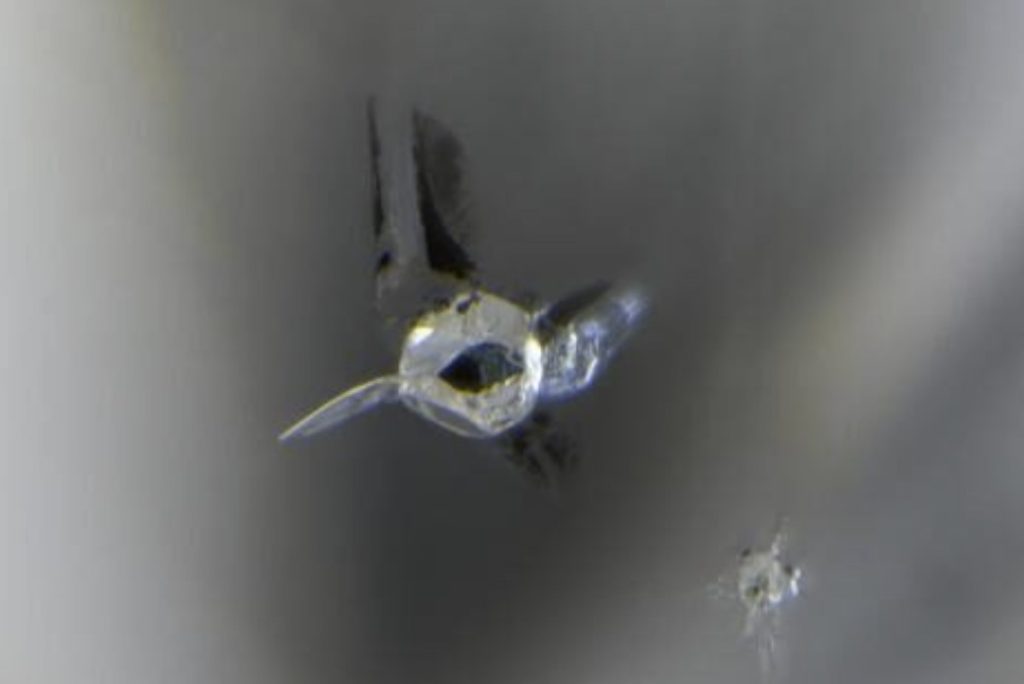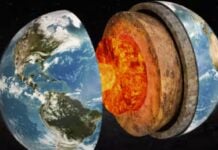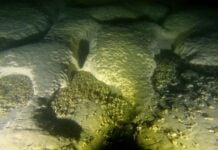This is amazing. It is incredibly rare to even have a super deep diamond, and then to have inclusions in it is even rarer. According to a new study on an inclusion in a diamond, our planet’s mantle contains oceans’ worth of water locked up tight within the minerals there.

A beautiful blue flaw in a gem-quality diamond from Botswana is actually a tiny fragment of Earth’s deep interior — and it suggests our planet’s mantle contains oceans’ worth of water.
The flaw, technically called an inclusion, looks like a fish eye: a deep blue center surrounded by a white haze. But it’s really a pocket of the mineral ringwoodite from 660 kilometers down, at the boundary between the upper and lower mantle. This is just the second time scientists have found this mineral in a chunk of crystal from this zone, and the sample is the only one of its kind currently known to science. The last example was destroyed during an attempt to analyze its chemistry.
“It is incredibly rare to even have a super deep diamond, and then to have inclusions is even rarer,” says Suzette Timmerman, a mantle geochemist and postdoctoral fellow at the University of Alberta, who was not involved in the new discovery. Finding a ringwoodite inclusion is even more mind-boggling, she says.
EMP, solar flares and lightnings may disrupt electronics in your homes, cars and generators. To prevent a fire at the breaker box and PROTECT YOUR HOME, CAR, BUSINESS, SOLAR PANELS and ELECTRONICS you should install an EMP Shield.
The discovery indicates that this very deep zone of Earth is soggy, with vast amounts of water locked up tight within the minerals there. Though this water is chemically bound to the minerals’ structure and doesn’t flow around like an actual ocean, it does likely play an important role in how the mantle melts. This in turn affects big-picture geology, such as plate tectonics and volcanic activity. For example, water could contribute to the development of areas of mantle upwelling known as plumes, which are hotspots for volcanoes.
The stunning bit of diamond-encased mantle was discovered by Tingting Gu, a mineral physicist now at Purdue University, who was at the time doing research at the Gemological Institute of America. Her job was to study rare inclusions found in diamonds. Inclusions are undesirable for jewelry because they cloud a diamond’s sparkle. But they’re often interesting to scientists because they trap bits of the environment where the diamond formed millennia earlier.

The vast majority of diamonds form between about 150 to 200 km below Earth’s surface. But a handful come from much deeper. It is often difficult to pinpoint exactly how deep, but the new sample was remarkably accommodating on that front, Gu and her colleagues reported on Monday in a study published in Nature Geoscience.
Ringwoodite can only form at incredibly high pressures. It is not found in Earth’s crust, but it is sometimes seen trapped in meteorites that underwent major cosmic trauma. In Earth’s mantle, ringwoodite exists at the pressures present down to 660 km. The single other terrestrial ringwoodite sample found, which was discovered in a diamond in 2014, could just be said to have formed within 135 km so of that depth. The two other minerals found in the new inclusion, ferropericlase and enstatite, can only occur together at 660 km and deeper, pinpointing where the diamond formed.
Prepare Now… You will never be in the dark again with this portable power station…
That’s an important depth because it happens to be the boundary between mantle layers — where seismic waves moving through Earth’s interior mysteriously change speeds. Ringwoodite holds water better than ferropericlase and enstatite, so the mineral probably releases a lot of water as it undergoes changes at this boundary. The change in minerals and the possible water release could explain why the seismic waves travel differently through this region.
The ringwoodite inclusion holds a tiny amount of water bound to the molecules that make up the mineral, as did the 2014 sample. This is important because — though previous lab experiments have suggested the mantle could store massive amounts of water — there has been little direct proof that it actually does.
The 2014 ringwoodite discovery was the first hint, but this second sample makes for a much more convincing story, Timmerman says. If the mineral is indeed largely waterlogged in the mantle transition zone, the water stored in the deep Earth could easily surpass the water on the planet’s surface. “If you only have one sample, it could just be a local hydrous region,” she says, “whereas now that we have the second sample, we can already tell it’s not just a single occurrence. It’s likely to be widespread.”
Prepare now! Stock up on Potassium Iodide Tablets for the next nuclear disaster…
The next step is to figure out where this water comes from, says Oliver Tschauner, a mineralogist at the University of Nevada, Las Vegas, who was part of a team that discovered a high-pressure form of water ice in ultra deep diamonds in 2018 but was not involved in the new study.
Researchers know the oceanic plates carry water with them as they are pushed into the mantle by plate tectonics, but they debate how deep this water can travel. It’s also possible that the water has been there since Earth formed. Understanding the way water cycles between Earth’s depths and surface could help explain how it developed into such a hydrated planet over its 4.5 billion-year history.
To learn more, researchers will need to analyze trace elements in the new inclusion, Tschauner says. They can also hope to find more deep-mantle ringwoodite in diamonds in the future. That would be a lucky break — but then again, so was this discovery, Gu says. “If someone proposes to you with a diamond, and you find an inclusion,” she adds, “don’t say no.” [Nature, SA]












I heard about this from Creation Ministries International years ago on the historicity of the Bible. It was a discussion of the Flood and the fountains of the deep and water diamonds. Most new atheism people refuse to believe the water is there, no matter science states it’s true.
660 kilometers is deep. How was this diamond discovered? It says discovered in Botswana. Doesn’t say exactly where (depth), or how. Maybe there are more waiting to be discovered? Good luck. Start drilling. Lol.